

Part I- Basic Principles in Salt Tectonics
In the previous chapter, we have mentioned several times salt expulsions basins. This kind of sedimentary basins, which are, often, called “mini basins”, is developed over allochthonous salt. Since the salt of an allochthonous salt nappe flows down-slope, it creates a local subsidence (compensatory subsidence). This subsidence combined with eustasy creates space available for sedimentation, i.e., accommodation. Young and, generally, under-compacted sediments then fill the space available. These basins are, easily, recognized on seismic lines (fig. 313), time slices (fig. 314) and, under certain conditions, on bathymetric maps (fig. 315).
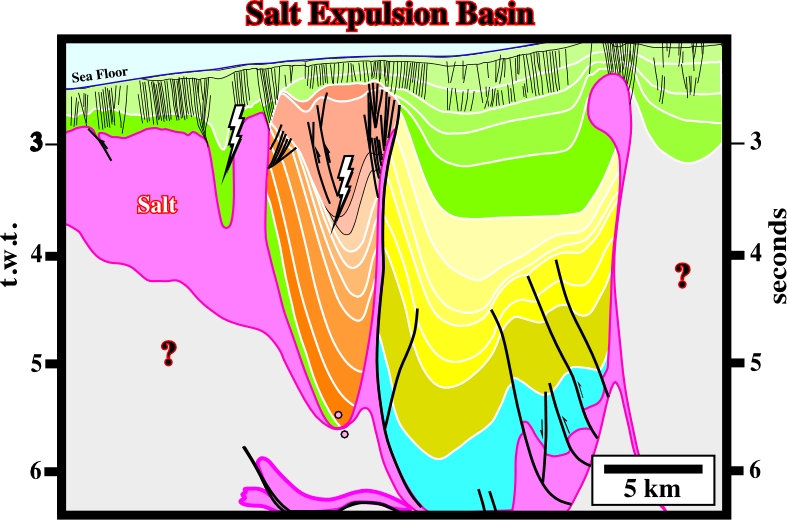
Fig. 313- On this tentative interpretation of an Angola offshore seismic line, in association with the allochthonous salt, which is connected with the autochthonous layer by a salt ramp, a large and a small salt expulsion basins are evident. The compensatory subsidence, which created them, can only by explained by salt flowage. The bottom of the small basin is clearly the allochthonous salt. A salt weld can occur at the bottom of the large basin, what means that hydrocarbons can eventually migrate into such a mini-basin. Chronostratigraphic correlations between seismic intervals within and outside of mini-basins are quite difficult in absence of calibration wells.
The salt expulsion basins are, generally, rich in reservoirs. They are, mainly, associated with turbidite depositional systems, either basin floor fans or slope fans, using the Vail’s terminology. The petrophysical characteristics of these reservoirs are, generally, very good. They allow high productivities in the order of 10000-20000 b/d, which is fundamental for the profitability of the associated accumulations, particularly, when water depth is high. Actually, since hydrocarbons are predicted, or found, attention must be give to the type of reservoirs we are leading with. The geometry and continuity of turbidite reservoirs can be quite different:
- Basin floor fan reservoirs, generally, have large and continuous dimensions. In addition, they are often connected.
- Contrariwise, slope fan reservoirs, in general, have small dimensions and are rarely are connected. Their discontinuity is a distinguish trait.
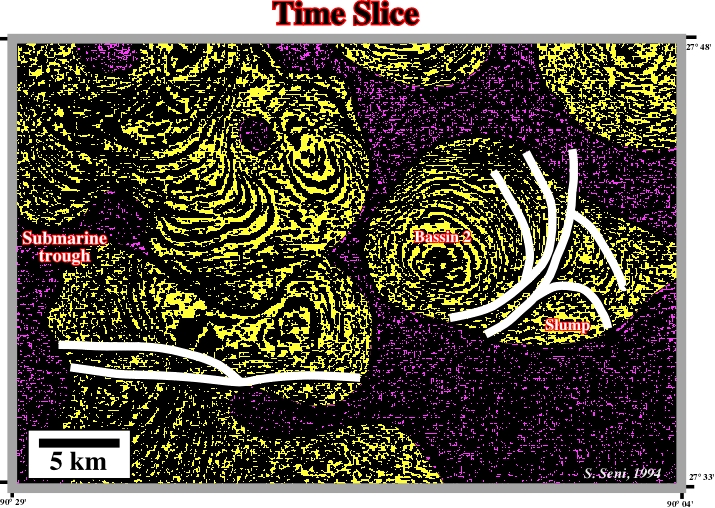
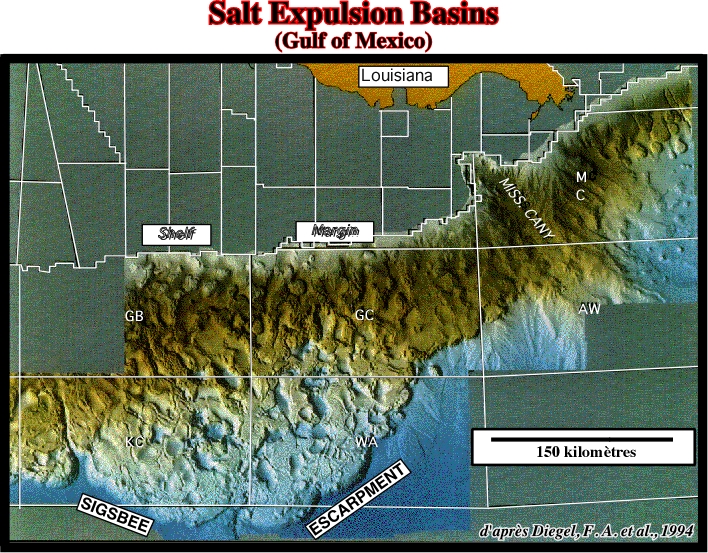
The mechanism of development of salt expulsion basins is depicted on the sketch below (fig. 315).
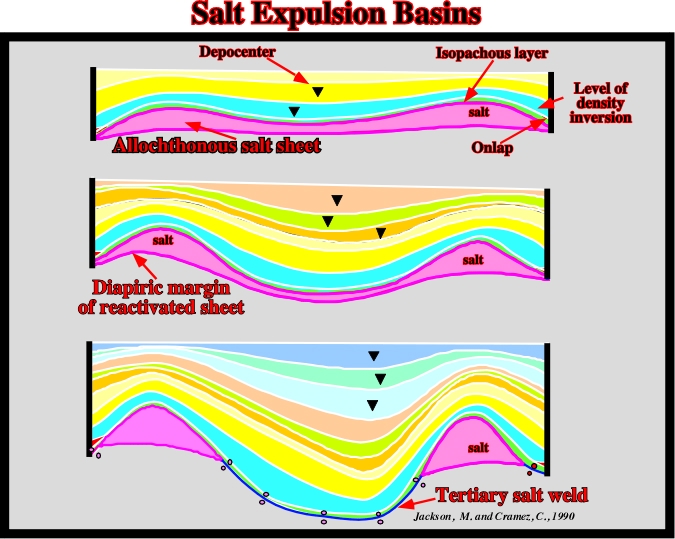
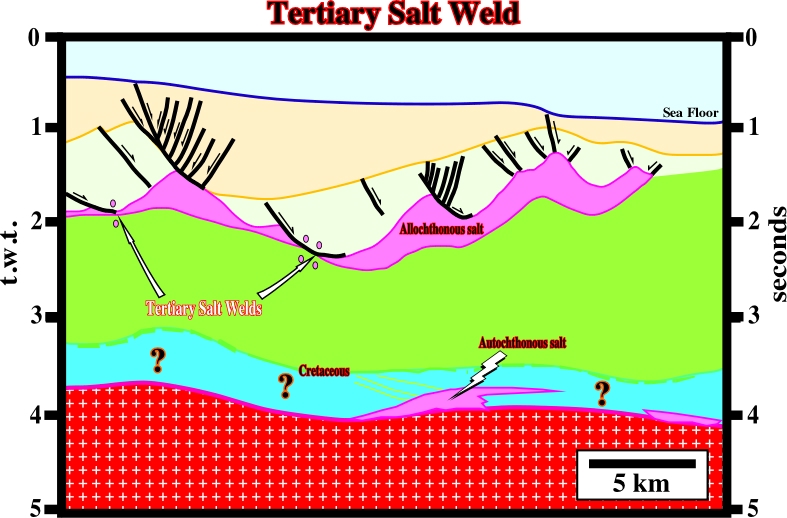
Fig. 316- On this tentative interpretation of a GOM dip seismic line, roughly, parallel to the salt flowage, salt expulsion basins show a geometry, totally, different of the one represented in the sketch of fig. 315, which was built using a strike line. The next figures (fig. 317-318) represent tentative interpretation of perpendicular seismic lines through a salt expulsion basin.
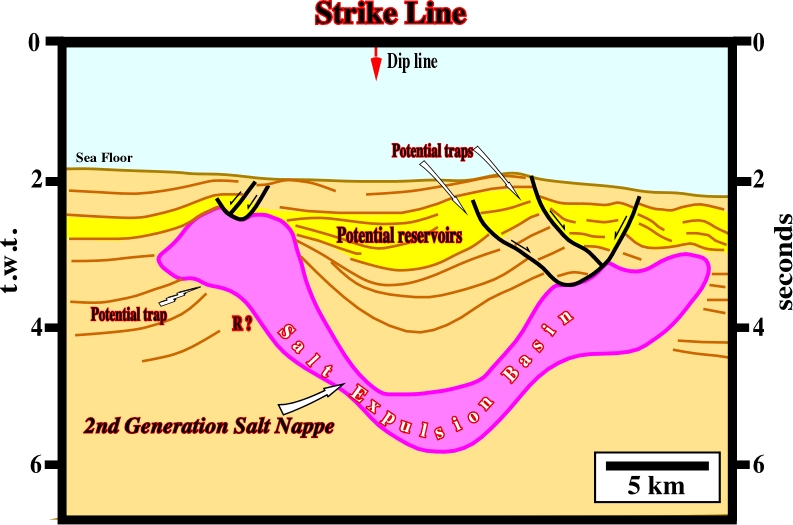
Tertiary salt welds are, easier,, recognized in dip lines than in strike lines. Therefore, the evaluation of the hydrocarbon potential of a prospect within a salt expulsion basin requires an exhaustive interpretation of all lines, particularly the dip lines and salt welds, in which migration paths are easier to recognize. The other hydrocarbon parameters are often present. Sandstone turbidite reservoirs are quite abundant in this type of basin. Explorationists have invoked several sedimentary models explaining the abundance of reservoir in mini-basins. Among them, there is one, where the turbidite currents jumping from mini-basin to mini-basin in a similar way as they jump in a foredeep basin context (fig. 318).
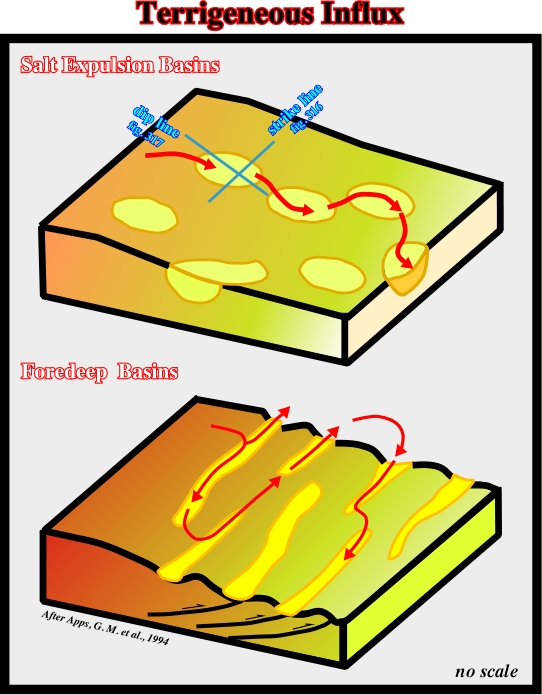
to continue press
next